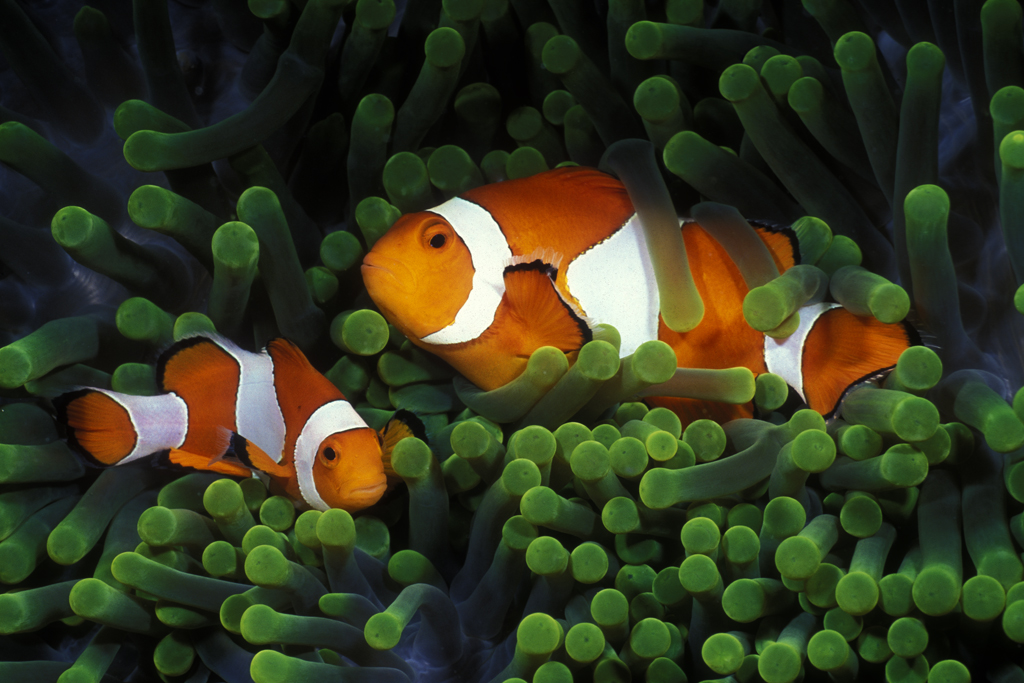 |
| Anemonefish also known as the Clown Fish, most known fish species on a coral reef |
Anemonefish-Pomacentridae. This is probably the most known fish species on a coral reef. Anemone fish are very bad swimmers and hardly swim more than two meters away from their anemone. If in danger, they will hide between the poisonous tentacles of their symbiotic host. The poison of the anemone does not harm them because they grow up in the anemone and build up their immunity. It is only the Clarks anemone fish that are known to be immune from birth. The anemone fish protects the anemone from polyp-feeders like butterfly fish, who try to feed on the anemone's tentacles. This process of symbiosis is a very common way of life on coral reefs.
Every anemone has its own big dominant female that is in charge and she suppresses the growth of the other anemone fish living with her. If this dominant female dies or disappears, the first in male in rank will change sex and become the new dominant female. Anemone fish are one of the few species who take care of their own eggs. The female will stick the eggs on a place next to the anemone, which they have cleaned before. After about a week, the larvae will hatch during night and travel with the current. Two or three weeks later they will settle themselves on a matching anemone. The Amphipron family feed on a certain algae and plankton. There are around a thousand of different anemones, of which only ten species are inhabited by anemone fish.
Every anemone has its own big dominant female that is in charge and she suppresses the growth of the other anemone fish living with her. If this dominant female dies or disappears, the first in male in rank will change sex and become the new dominant female. Anemone fish are one of the few species who take care of their own eggs. The female will stick the eggs on a place next to the anemone, which they have cleaned before. After about a week, the larvae will hatch during night and travel with the current. Two or three weeks later they will settle themselves on a matching anemone. The Amphipron family feed on a certain algae and plankton. There are around a thousand of different anemones, of which only ten species are inhabited by anemone fish.





















